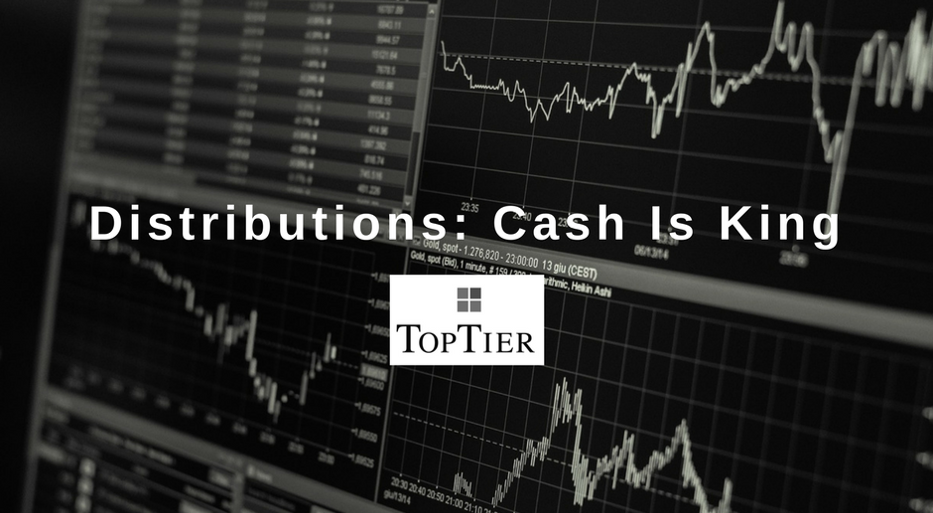
With Snap’s IPO looming, speculation on its success is rampant. As one of our portfolio companies, we too are watching closely. In the last two years, 50 tech companies have listed on U.S. exchanges. Of those, 80% have closed higher than the IPO price at the end of the first day, achieving an average “IPO pop” of 34% (WSJ). As a fund of funds manager, however, neither the IPO pop nor price have much bearing on the value we ultimately receive.
As an LP in venture funds, we are initially indirect owners of the stock through our fund interests. Our managers’ holdings are typically locked-up for six months following the IPO. Once off lock-up, our managers are free to either sell the stock or distribute shares “in-kind” at their discretion. Therefore, more relevant to us is the fact that over half of the aforementioned 50 tech IPOs are currently trading below their opening price. The portfolio impact here is significant. Over the last two years, almost 28% of distributions received from our GPs have been returned to us in the form of stock versus cash. As you might imagine, this number is actually skewed downward versus historical norms given the recent low IPO volume.
The value of in-kind distributions to a manager’s fund is typically based on the closing price of the stock on the day of distribution. It is in the GPs’ best interest to distribute when the stock price is high, locking in peak value for the fund and shifting the burden of timing public markets to LPs. This is not to suggest that GPs are bad actors, as there are several reasonable justifications for distributing stock. GPs may believe they are serving LPs best by granting each the opportunity to hold or sell as they see fit, and there are additional concerns to selling when that GP remains on the company’s board. (For more on this topic, see our March 2015 blog post.)
Unfortunately, many LPs are not public market investors and do not have the infrastructure or expertise to optimally maximize the value of these distributions. Moreover, the capital invested in private markets often is allocated from the private versus public equity allocation within an investor’s portfolio, and therefore liquidation is the rule of thumb. For example, Top Tier ultimately must sell publicly traded shares and will be subject to normal stock price fluctuations. Trading these public shares also involves paying fees and commissions, which although small, decrease the value of the return to us on a net basis. The real elephant in the room, however, is that GPs take credit for and receive carry on the distribution value, regardless of the value actually realized by LPs, creating a level of misalignment with stock versus cash distributions.
We conducted analysis on our own sale of in-kind distributions for the last two years to quantify this issue. Based on trades completed from 2015 to date, we found that one day post-distribution prices had dropped as might be expected. After five days, price had ticked up some, but still fell below distribution price. Even within 10 days, although the stock continued to regain value, in 55% of cases the stock still did not reach the distribution price. This is concerning to us as this analysis is in the context of a bull market, based on more than a 21% increase in NASDAQ since 2015. When the markets enter a bearish cycle, as they naturally will, we fear this situation will further deteriorate and hamper LPs’ ability to retain value in the public markets.
The past two years have seen the lowest volume of tech IPOs since 2009. 2017 is expected to be a rebound year, with names like Snap, MuleSoft, Spotify, Cloudera and Alteryx in the queue and rumors swirling around Palantir, Uber, Lyft and others. We are hopeful that these companies will provide a needed boost to the IPO market and promote the long-term value that both we and our managers count on. However, for LPs like ourselves, the need to manage large trade books is not only taxing but also levies additional cost. While we appreciate our GPs’ desire to provide LPs with optionality, cash is always welcomed here.
Disclaimer: This data represents a small percentage of the portfolio funds in which the Top Tier Funds have invested. Additional detail regarding the portfolios of the Top Tier Funds and their respective performance is available upon request. The data in this presentation is obtained from sources believed to be accurate and reliable. However, Top Tier Capital Partners does not guarantee the accuracy, adequacy, completeness or availability of the data and is not responsible for any errors or omissions in it or for the results obtained from its use.
